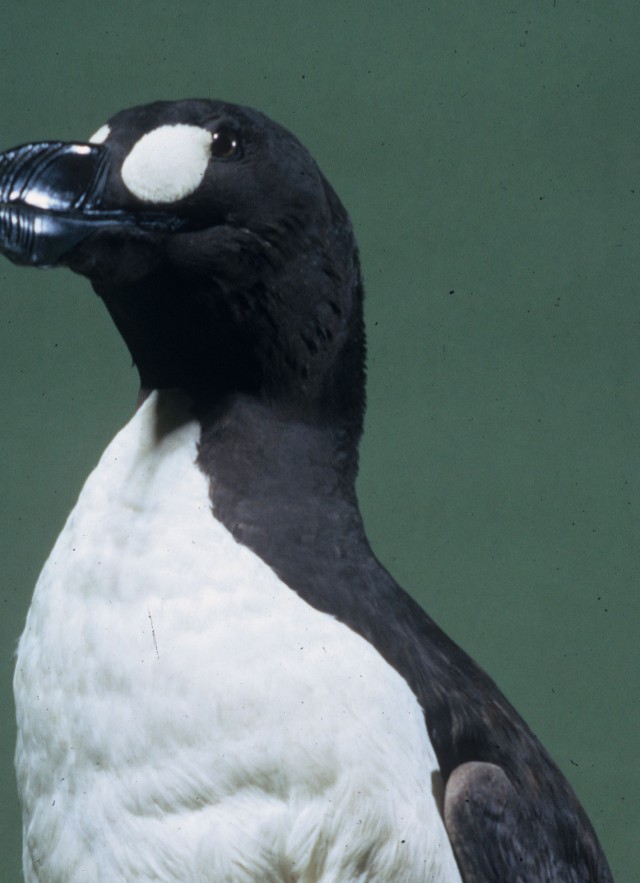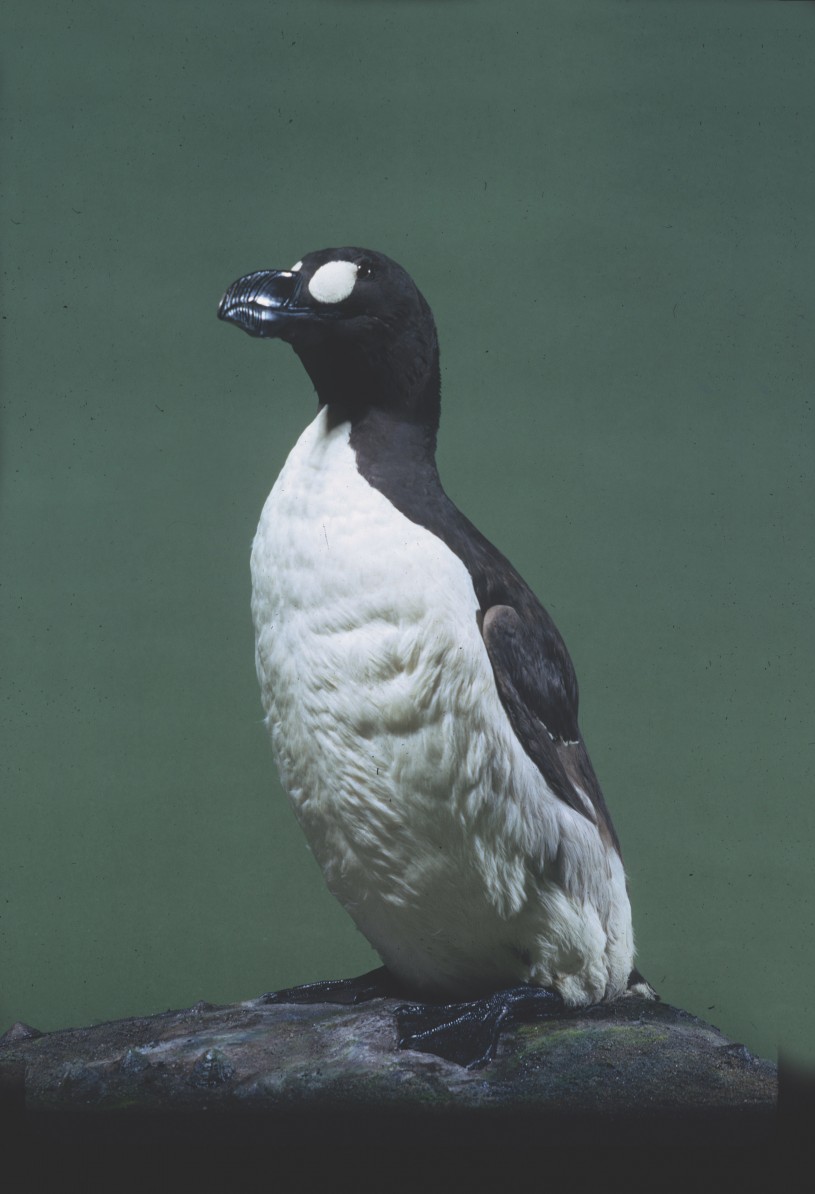Auk-Ward
One story goes that, in just half an hour, hundreds of auks were herded onto a single ship

The face of extinction tends to be the dodo. But another famous bird went the way of the dodo and humans are entirely to blame.
The great auk, Pinguinus impennis, once swam off the Atlantic coasts of North America and Europe. Smartly dressed in tuxedo colors, these large flightless birds were ferocious fishermen. However agile they were in the water, their clumsiness on land made them easy targets for hunters. Once numbering in the hundreds of thousands, in just 250 years they went extinct.
The great auk was prized for its down in the 17th century and seamen loved them for their meat and eggs. One story goes that in just half an hour, hundreds of auks were herded onto a single ship for use as food on a long journey.
By 1844, only two were left, strangled to death for their value. Today specimens are incredibly rare in collections, only 80 taxidermy great auks can be found in the entire world. Luckily NHM has one of the rare birds.

It’s often hard to suss out whether humans or natural climate changes are responsible when a species goes extinct. But genetic analyses can provide important clues. Ornithology Collections Manager Kimball Garrett joined a team of researchers to find out. They studied the DNA from specimens to see if there were signs of a potential decline. Our own auk specimen (on display in the Bird Hall) contributed several feathers to the study. The researchers found evidence of a robust population, suggesting it wasn’t at risk of extinction before humans started hunting them in the 1600s.
While a sad story, it is a warning to the threats humans pose to seemingly plentiful populations. But it also shows just how critical museum specimens are to tracing the history of species, including the history of population decline and extinction.